Easter Rising 1916: How Winifred Carney became James Connolly's confidante
- Published
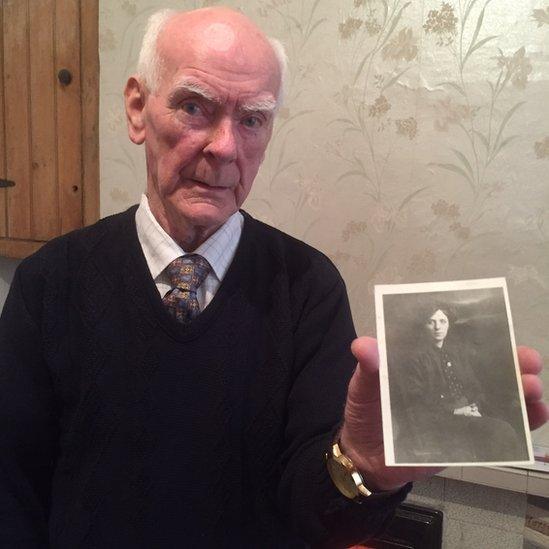
Desmond Cassidy said he would love to turn back time and talk to Winifred Carney about her role in the Easter Rising
"Whatever he had in mind, she was with James Connolly all the way. She aspired to his plans and ideas - they were sort of kindred spirits."
Those are the words of Belfast man Desmond Cassidy, one of the few remaining relatives of Winifred Carney.
She helped to set up an organisation called Cumann na mBan (League of Women), which was known as the women's IRA, and during the 1916 Easter Rising she was a secretary to Connolly, one of the rebel leaders.
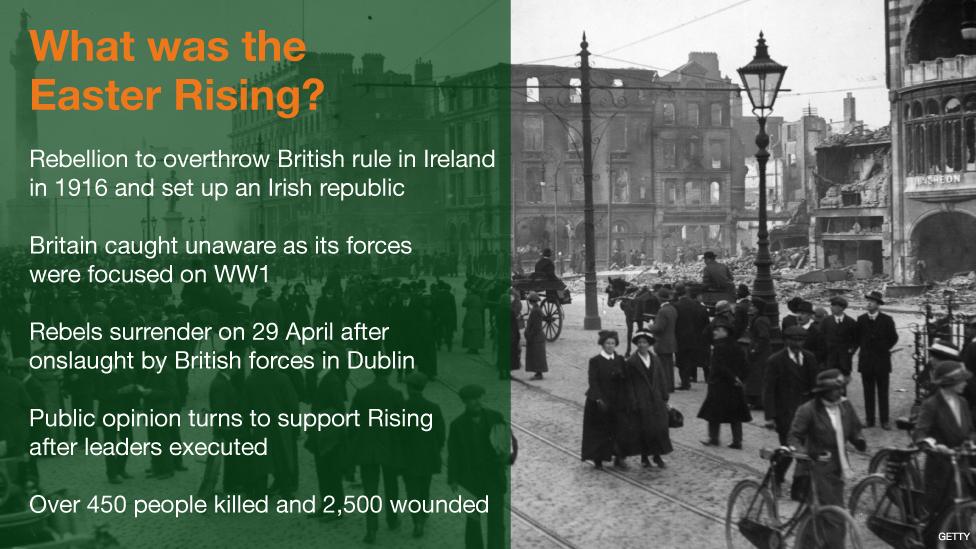
Her name is well known among academics and Irish historians, but for many years, Desmond was mostly unaware about the extent of the role that his cousin, once removed, played in the 1916 Easter Rising.
Her story is one that Desmond is only too happy to be able to tell, after years of searching through historical documents and scouring photo albums to learn more about her.
Winifred Carney was born in Bangor, County Down in December 1887, but she moved to Belfast with her mother and six siblings not long after her parents divorced, while her father moved to London.
'Aide-de-Camp'
She became involved in political activism early on in her adult life, through suffragist and socialist activities, but it was through her work with the Irish Textile Workers' Union (ITWU) that she met the man who would have the biggest effect on her political leanings - the then-general secretary of the union, James Connolly.
Desmond said Winifred gained Connolly's confidence very early on, becoming his personal secretary and 'aide-de-camp' when preparations for the rising began.
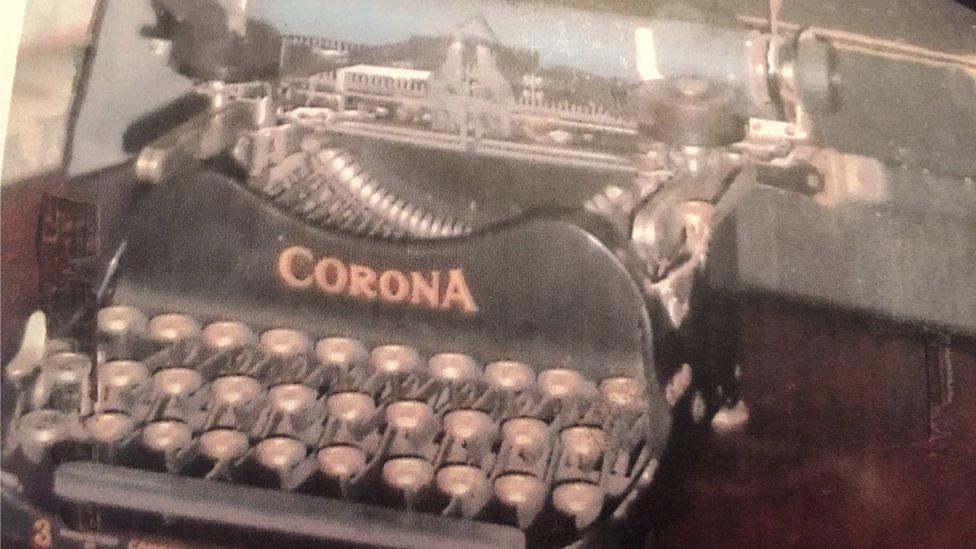
It is said that Winifred Carney joined the insurgents of the Easter Rising equipped with both her typewriter, shown above, and a gun
"James Connolly soon knew Winifred was well educated, a secretary and a shorthand typist," he said.
"He got to know he could explain his plans and thoughts to Winifred and they wouldn't go any further. Whatever he had in mind, she was with him all the way. She aspired to his plans and ideas - they were sort of kindred spirits.
"I think he would've trusted Winifred with his life, and he explained to other people and other leaders that they could trust Winifred Carney as they would've trusted him."
'Most dangerous women'
Following the events of the Easter Rising, Desmond said Winifred was captured and put into Mountjoy Prison before being transferred to Kilmainham Jail.
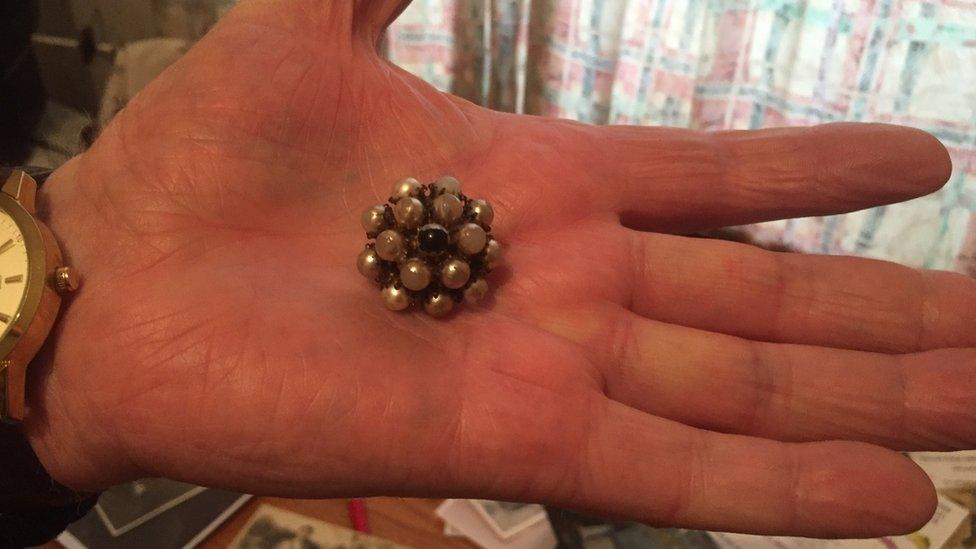
A brooch belonging to Winifred Carney, displayed by her relative Desmond Cassidy
"General John Maxwell decided Winifred and six other ladies - including Countess Constance Markievicz - were the most dangerous women in Ireland," Desmond said.
"He had them deported to England to Aylesbury Prison. Winifred spent eight months in prison before she was released during the general amnesty."
After her release, Winifred came back to Belfast and continued both with her union work and her involvement in politics.
She ran for election with Sinn Féin in 1918, albeit unsuccessfully, before becoming a member of the Socialist Party of Ireland and, later, the Northern Ireland Labour Party.
Winifred's personal life was not as tumultuous, but was just as fascinating. In 1928, she married George McBride, a Protestant from the Shankill Road in Belfast. He was a member of the unionist Ulster Volunteer Force (UVF), who joined the Army and survived the Battle of the Somme in 1916.
Their unlikely love story lasted until her death in 1943.
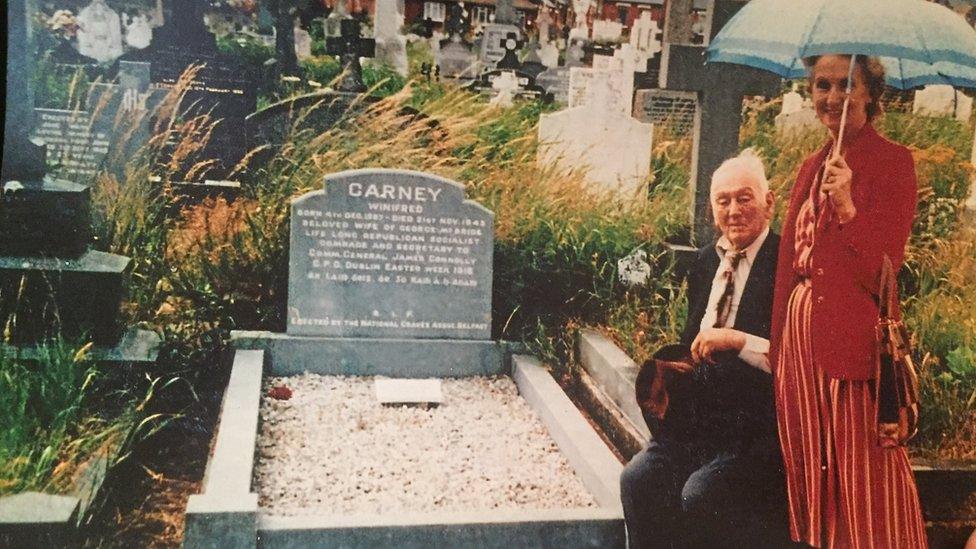
Winifred Carney's husband, George McBride, at her grave in Milltown Cemetery, pictured along with Desmond Cassidy's sister, Mabel
'Private person'
Desmond said Winifred had a fascinating, but difficult life, haunted by "the hardships she went through in prison".
"Even when she came back to Belfast, the police were on her tail every day. She was so often in prison that I think that was the reason for her bad health in later life," he said.
Desmond was just nine years old when Winifred died. He said he never met her, and that is part of the reason he takes an interest in keeping her memory alive now.
He added: "If I could turn the clock back, I would have loved to have met Winifred Carney, but I still think she would've been a very private person.
"As much as I would've asked Winifred about what went on between James Connolly and herself while making plans for the Easter Rising, I don't think Winifred would have said anything other than she had been pleased to do her part."
- Published7 January 2016
